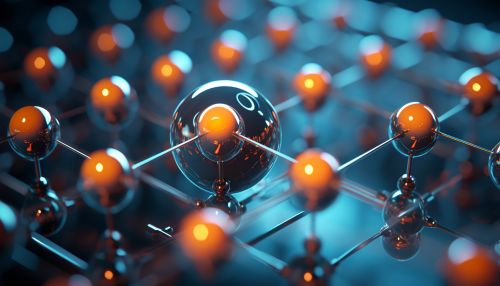Molecular Electronics
Introduction
Molecular electronics, also known as moletronics, is a branch of nanotechnology that involves the study and application of molecular building blocks for the fabrication of electronic components. It represents an interdisciplinary area that spans physics, chemistry, and materials science, with a focus on the discovery and development of novel molecular devices.


History and Development
The concept of molecular electronics was first proposed in the 1970s as a means to continue the miniaturization of electronic devices beyond the limits of small-scale integration in semiconductor technology. The idea was to use individual molecules or nanoscale collections of molecules as electronic components, such as transistors, rectifiers, or diodes.
Molecular Components
The basic components of molecular electronics are individual molecules or assemblies of molecules that exhibit desirable electronic characteristics. These molecules are typically composed of a combination of organic and inorganic elements, and are designed to have specific electronic properties.
Conducting Molecules
Conducting molecules are a class of molecules that can carry an electric current. These molecules are typically composed of alternating single and double bonds, a structure known as conjugation. This conjugation allows for the delocalization of electrons, which can move freely across the molecule, enabling it to conduct electricity.
Switching Molecules
Switching molecules are another important class of molecules in molecular electronics. These molecules can exist in two or more stable states and can switch between these states in response to an external stimulus, such as an electric field or light. This switching behavior can be used to create molecular switches, which are analogous to the transistors in conventional electronics.
Molecular Devices
Molecular devices are electronic devices that are composed of individual molecules or assemblies of molecules. These devices can perform the same functions as conventional electronic devices, such as amplification, rectification, and switching, but at a much smaller scale.
Molecular Diodes
Molecular diodes are one of the most studied types of molecular devices. These devices are composed of a single molecule or a small assembly of molecules that allow current to flow in one direction but not the other, similar to a conventional diode.
Molecular Transistors
Molecular transistors are another type of molecular device. These devices are composed of a single molecule or a small assembly of molecules that can amplify or switch electronic signals, similar to a conventional transistor.
Challenges and Future Directions
Despite the potential of molecular electronics, there are several challenges that need to be overcome before it can become a practical technology. These challenges include the reliable fabrication and characterization of molecular devices, the integration of these devices into larger circuits, and the development of computational models to predict the behavior of these devices.
Despite these challenges, the field of molecular electronics continues to advance, with new molecular devices and fabrication techniques being developed. As our understanding of molecular systems and our ability to manipulate them improves, the potential applications of molecular electronics will continue to expand.
